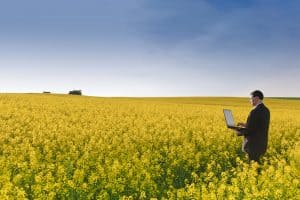LANDTHINK posted my weekly “Country Real Estate” column last week that discussed a low-cost, low-tech approach to estimating a property’s current market value using, what I call, tax-assessed value (TAV) analysis.
This approach adjusts a property’s TAV up or down in light of recent sales for similar properties to find current market value. TAV analysis is not an appraisal or a Competitive Market Analysis (CMA). It doesn’t try to find a target property’s value by tweaking the specifics of recent comparable sales.
It starts with a base-line valuation (provided free via periodic reassessments for tax purposes) and calculates an adjustment factor based on recent sales. If sales of roughly comparable properties are 25 percent higher than their most recent TAVS, increase the TAV of the target property by 25 percent to get a current market value. It’s quick, easy and free (if you go into the courthouse yourself).
One LANDTHINK commentator suggested that TAV analysis does not factor into its valuation the current value of timber as a discrete and independent asset. That is true, and it’s an important point to understand. Let me explain.
A current market valuation of land (and to differing extents other types of property) — as estimated by appraisal, CMA or TAV analysis — may or may not have much to do with its actual net intrinsic worth, that is, the sum of all of its assets less their liabilities, risks and uncertainties. Market value, as I’m using it in terms of TAV analysis, is simply an estimate of how the current local market of buyers is likely to value a property. TAV analysis is not an estimate of net intrinsic worth, which is the net value, or price, of a property’s important assets and improvements.
Net intrinsic worth is determined by a careful valuation of a property’s individual assets. These will include a mix of things—economic assets like merchantable and pre-merchantable timber and cropland; environmental assets (which can have both an environmental value and a monetized value as in a conservation-easement, solar rights or wind rights); improvements (residence, farm facilities); minerals and other resources. Each asset should be discounted to the extent that it can’t be used, must be altered, is inefficient, or requires additional investment and so on. Liabilities affecting the property generally, such as a residence in a floodplain or the presence of a federally listed ETS species, should also be factored in as value discounters.
Appraisers do not value property this way. They do not try to estimate the values – let alone the net values — of discrete assets, such as timber. Appraisals and CMAs work up their estimate of value based on a whole-property assessment rather than one that proceeds part by part. Tweaking in appraisals applies to residences, not differences in value in land assets.
Appraisals in my opinion are best suited to residential properties, particularly where the target property is one of many of its type in a particular neighborhood. Appraisal methodology may not well-suited for land in its various forms, particularly when a property combines several different types of assets and multiple discounting conditions.
Specialized farm appraisers are available. But I’ve found that a buyer must often obtain several different consultant evaluations of assets on one target property to get to a net intrinsic worth figure. A common combination of consultants is forester, mineral economist and environmentalist.
Appraisers who do the county’s assessment every few years generally use a fixed value that they apply to all timberland of a certain type. This straight-through value doesn’t take into account the actual market value of the merchantable timber on the tract or whether the tract has been cut recently, among other factors. I’ve seen a reassessment figure of $600/a applied to all timberland in a county regardless of whether the merchantable timber on the acre was $0 or $2,000.
With land, a buyer should use a TAV analysis to get a general sense of how buyers would value it compared with its own assessment value adjusted for recent price trends.
But to determine its worth involves in my opinion going through the property’s individual assets, netting out each asset’s value, then summing a net worth.
From a buyer’s perspective, a good deal presents itself when property can be purchased below its net intrinsic worth, regardless of the TAV number.
This content may not be used or reproduced in any manner whatsoever, in part or in whole, without written permission of LANDTHINK. Use of this content without permission is a violation of federal copyright law. The articles, posts, comments, opinions and information provided by LANDTHINK are for informational and research purposes only and DOES NOT substitute or coincide with the advice of an attorney, accountant, real estate broker or any other licensed real estate professional. LANDTHINK strongly advises visitors and readers to seek their own professional guidance and advice related to buying, investing in or selling real estate.









I think that a really important thing to understand is that the differences in market value of a property has its roots in how people value the intrinsic components of the property. Even timber can have multiple “types” of value. For example there is a timber value, an aesthetic value, or even a carbon sequestration value…all of which could be valued different by different players in the market. Using this approach is a great, individual manner of looking at the value of a property. Market Value will generally focus on those intrinsic values that valued highest over the broader market.
A note on TAV: You are dealing with small political areas of land, ie, townships. You are dealing with individual personalities that have great power and disgression when comes to assessing rural properties that are outside the normal cropland parameters.
I had a ten acre parcel of rural AG-1 property with a 3000 sq ft pole barn that was assessed 4X increase over the previous year. Nothing had changed in the real world; hay, spruce tree plantation & storge in the building. When I inquired as to the reason for the increase, I was told that it didn’t look to them (the assessor) that any thing was happening so it was renamed as recreational. “You must be using it for recreation”.
Evidence of hay and tree sales sent to the assessors office changed the situation.
They will pull this trick on every piece of dirt that is not covered with corn and it is up to the owner to prove them wrong. And they will be back again the next year..
They love to go after the absentee owner !!!!
This happened in Illinois where farmland is assessed by soil type . The assessments originate in the state capital.for farmland.